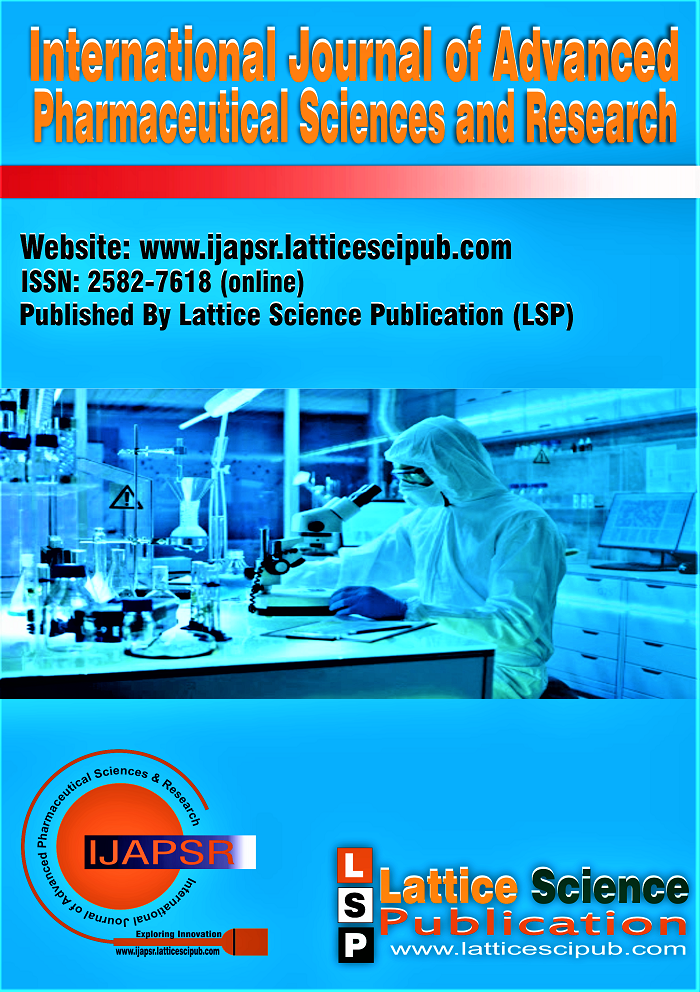The Simplest Pharmacokinetic Equation in ADC (Antibody Drug Conjugate) or PDC (Peptide Drug Conjugate) Research
Main Article Content
Abstract
It has been known that devising a suitable pharmacokinetic equation in ADC (Antibody Drug Conjugate) or PDC (Peptide Drug Conjugate) is exceptionally difficult as there are many factors which affect to distribution of this drug in vivo. Some address the three portions, antibody, linker, and drug can be differently behave in the bloodstream makes them difficult to monitor it. Also other issues like solubility, liphophilicity (cell penetration ability), molecular weight, ionization, enzyme degradation, renal clearance, aggregation, and poor adsorption are mentioned as a big barrier to devise a delicate pharmacokinetic equation. Herein, the most simple mathematic pharmacokinetic equation could be argued with the following three hypotheses in ADCs or PDCs development; all drugs are attached only the target cells not any other sites till their complete function, the speed of drug working is constant with time, and all cancer cells have equal shape, mass, and size placed in a list of petri dishes with same number in the same environment. Though in reality, these are not being kept, but knowing the parameters of pharmacokinetic equation could bring about a rough estimation of distribution when the synthesized drug is administrated to the selected animal at the stage of animal test. Thus, the additional modifications which reflect the real status could be developed from this backbone equation, Y= -(r/2p) X + r/2 (p = time(minutes), r/2 = demolished amount of cancer cells(gram)) in the near future. I expect many real problems like solubility, liphophilicity (cell penetration ability), molecular weight, ionization, enzyme degradation, renal clearance, aggregation, and poor adsorption, etc. could be discussed from this suggested equation model.
Downloads
Article Details

This work is licensed under a Creative Commons Attribution-NonCommercial-NoDerivatives 4.0 International License.
How to Cite
References
Heather E Vezina, M.onette Cotreau, Tae H. Han, Manish Gupta, Antibody Drug Conjugate as Cancer Therapeutics: Past, Present and Future, J Clin Pharmacol, 2017, 57(S10), p.11-25 [CrossRef]
Leonid Gibiansky, Ekaterina Gibiansky, Simulation Investigation of the Integrated Pharmacokinetic Model for Antibody-Drug-Conjugates, QuantPharm LLC, North Potomac, MD, https://www.quantpharm.com/pdf_files/ACoP_2019_ADC_Poster.pdf
Antoine Henninot, James C. Collins, and John M. Nuss, The Current State of Peptide Drug Discovery: Back to the Future?, Med. Chem. 2018;61: 1382−1414, p.1393,1399-1401 [CrossRef]
Isabel Figueroa, et al., Prediction of non-linear pharmacokinetics in humans of an antibody-drug conjugate(ADC) when evaluation of higher doses in animals is limited by tolerability : Case study with an anti-CD33 ADC, mAbs, 2018, 10:5, p.738-750 [CrossRef]
Yue Huang, et al., Characterization of Antibody-Drug Conjugate Pharmacokinetics and in Vivo Biotransformation Using Quantitative Intact LC-HRMS and Surrogate Analyte LC-MRM, Anal. Chem., 2021, 93, p.6135-6144 [CrossRef]
Esteban Cruz, Veysel Kayser, Monoclonal Antibody Therapy of Solid Tumors: clinical limitations and novel strategies to enhance treatment efficacy, Biologics, 2019, 1;13:33-51 [CrossRef]
Amrita V.Kamath, Suhasini Iyer, Challenges and advances in the assessment of the disposition of antibody-drug conjugates, Biopharmaceutics & Drug Disposition,2016;37:66-74, p.69 [CrossRef]
Bethany M Cooper, Jessica Iegre, Daniel H. O’ Donovan, Maria Olwegard Halvarsson, David R. Spring, Peptides as a Platform for Targeted Therapeutics for Cancer : Peptide – Drug Conjugates (PDCs), Royal Society of Chemistry, 2021, p.1480 – 1482, 1486 [CrossRef]
Michael J. Neal, Medical Pharmacology at a Glance, Seventh Edition, Oxford, John Wiley & Sons, Ltd. 2012, p.10-11
Michael J. Neal, Medical Pharmacology at a Glance, Seventh Edition, Oxford, John Wiley & Sons, Ltd. 2012, p.12-15
Louisette Basa, Drug-to-Antibody Ratio (DAR) and Drug Load Distribution by LC-ESI-MS, Antibody Drug Conjugates. Methods in Molecular Biology; L. Dury(Ed.); Humana Press, 2013, 1045, p.285-293 [CrossRef]
Bethany M Cooper, Jessica Iegre, Daniel H. O’ Donovan, Maria Olwegard Halvarsson, David R. Spring, Peptides as a Platform for Targeted Therapeutics for Cancer : Peptide – Drug Conjugates (PDCs), Royal Society of Chemistry, 2021, 50, p.1481,1491 [CrossRef]
Chang D-K, Lin C-T, Wu C-H, Wu H-C, A novel peptide enhances therapeutic efficacy of liposomal anti-cancer drugs in mice models of human lung cancer, PLos One, 2009, 4(1): e4147, p.5 [CrossRef]
Cell counting using a hemocytometer, www.sigmaaldrich.com/technical-documents/protocols/biology/cell-quantification.html
Mona Alas, Azam Saghaeidehkordi, K.Kaur, Peptide-Drug Conjugates with Different Linkers for Cancer Therapy, J Med Chem., 2021, 14; 64(1), p.216-232 [CrossRef]
Antoine Deslandes, Comparative clinical pharmacokinetics of antibody-drug conjugates in first-in-human Phase 1 studies, mAbs, 2014 6:4, p.859-870 [CrossRef]





